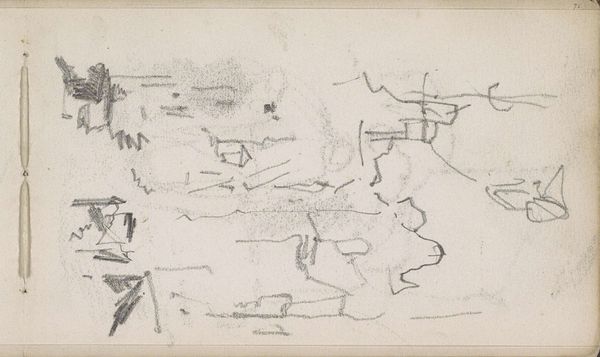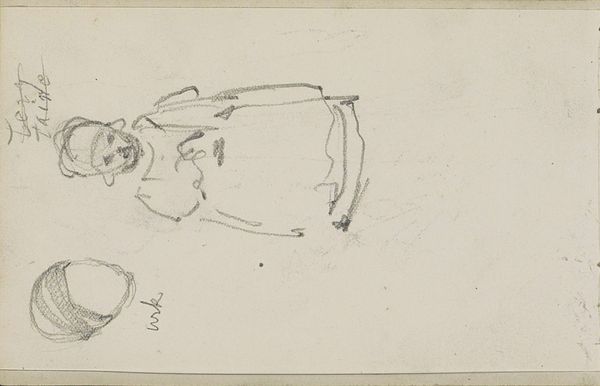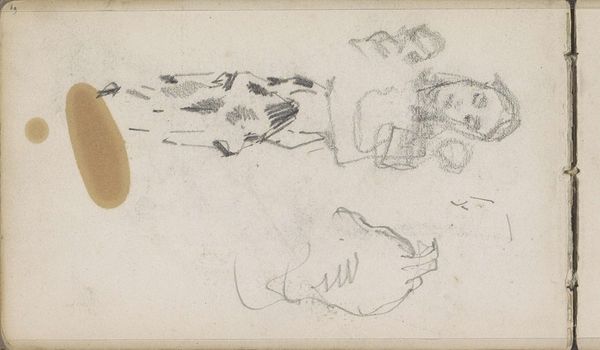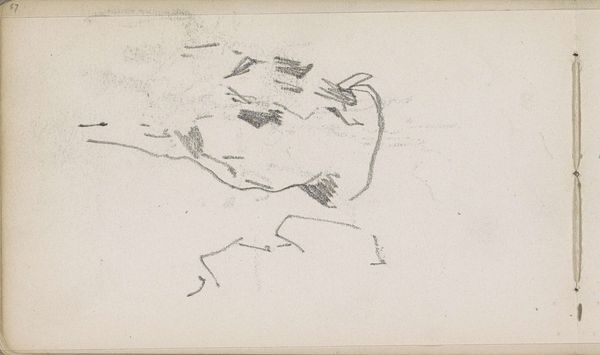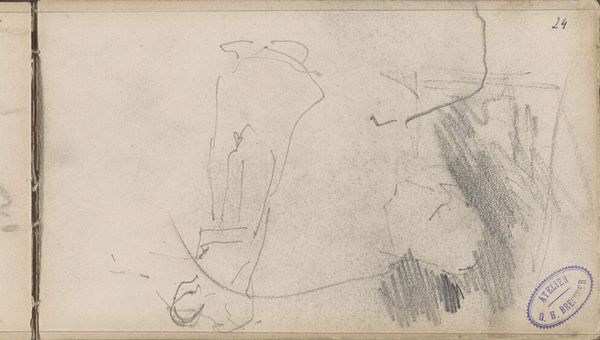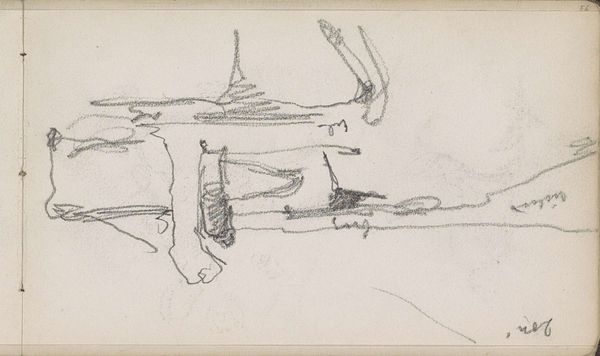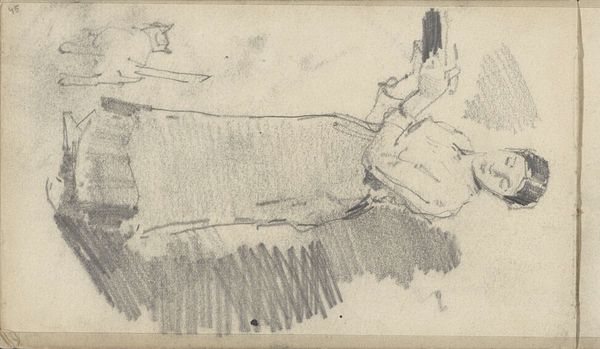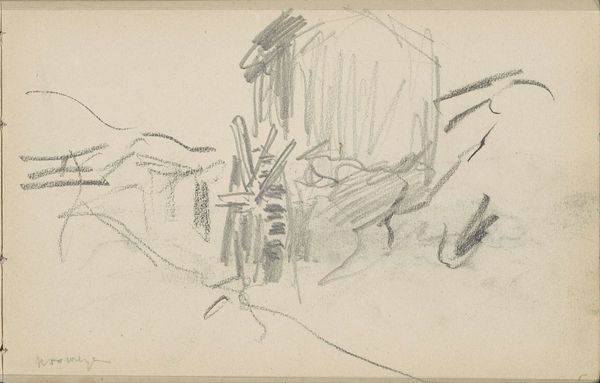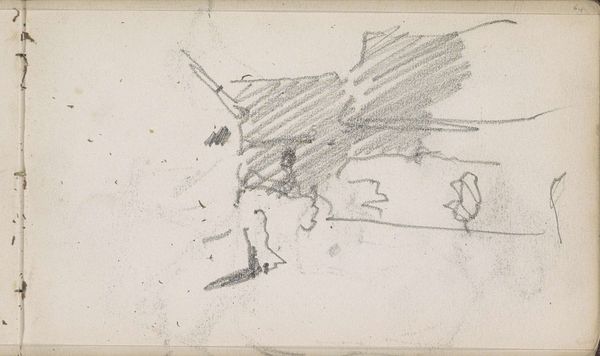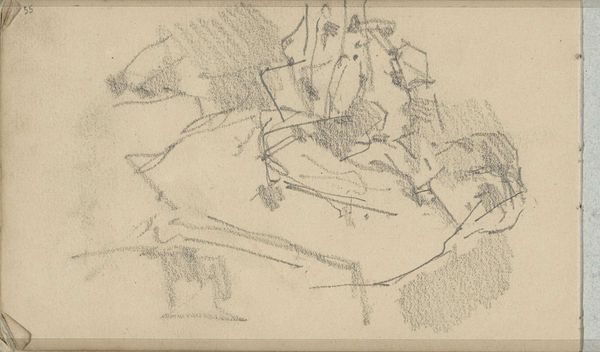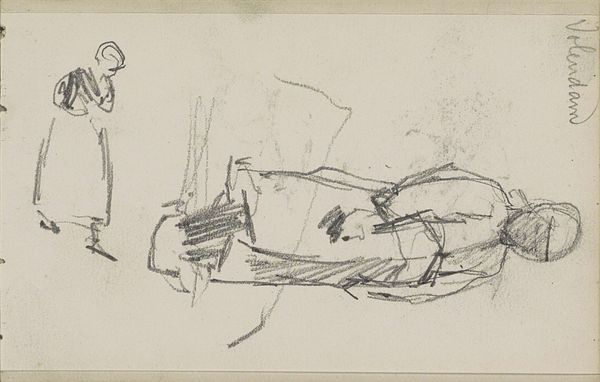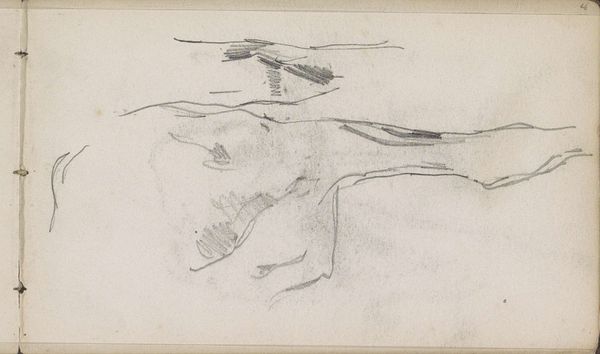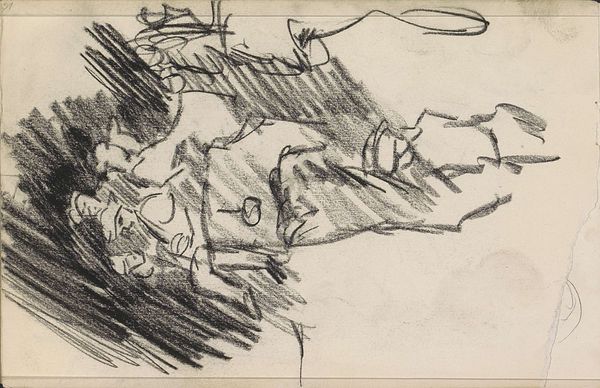
drawing, paper, pencil
#
drawing
#
impressionism
#
landscape
#
paper
#
pencil
Copyright: Rijks Museum: Open Domain
Curator: Breitner’s drawing, simply titled "Paarden," or "Horses," created between 1881 and 1883, offers a glimpse into his working process. Editor: It looks raw. Energetic even. Just a jumble of lines at first glance. I’m drawn to the paper; I wonder what kind it is, and how he was holding the pencil? Curator: Breitner used a pencil on paper here. We can analyze this work through the lens of the rapid urbanization in Amsterdam at the time. Horses, central to transportation and industry, became potent symbols of a changing society. His work as a photographer influenced the cropped and seemingly snapshot-like compositions. How might we interpret the animals’ apparent disarray, their confinement to the page? Editor: Right, look at the repetitive marks used to denote shadow and volume. The hasty strokes are less about idealized forms and more about capturing the animals’ mass and the chaotic urban landscape they navigate, right? What’s the link between this drawing, a preparatory sketch and a finished piece in Breitner's eye? I can almost feel the pencil dragging across the paper as he rapidly sketches these beasts of burden. Curator: He did several similar sketches which then may have informed his later paintings, prints, and photographs of working-class life, and urban landscapes. By presenting working horses in these quick studies, he really confronts our perception and valorization of labor. This reflects a larger narrative where traditional equestrian portraiture, celebrating wealth and leisure, becomes reframed within the gritty realities of labor. Editor: Exactly, that emphasis on labor shifts the social implications embedded within its context and moves to the immediate gesture. The labor *he* undertakes here, as draughtsman. It is that visible effort –the crossing lines, erasures even, all of that material residue that makes this piece really stick. What did it mean for an artist, working then in a modernising city to draw these subjects, en masse, as matter itself? Curator: The speed, the sketchiness…it disrupts traditional expectations of refined artistry and centers instead the dynamism of modern life as filtered through Breitner’s artistic sensibility. What really resonates is that, as you point out, his gesture is foregrounded, in addition to how his drawing invites the viewer to reconsider whose stories are typically represented and how labour can shift these historical and symbolic narratives. Editor: Looking again I think the charm lies in the unfinished nature, that glimpse behind the scenes that gives us insight into how the finished works came to be.
Comments
No comments
Be the first to comment and join the conversation on the ultimate creative platform.
